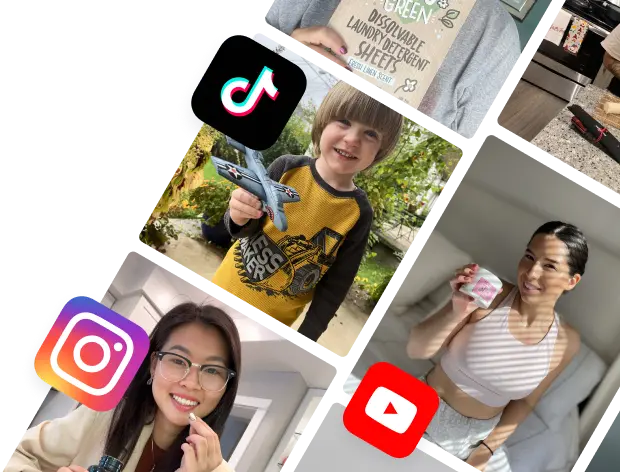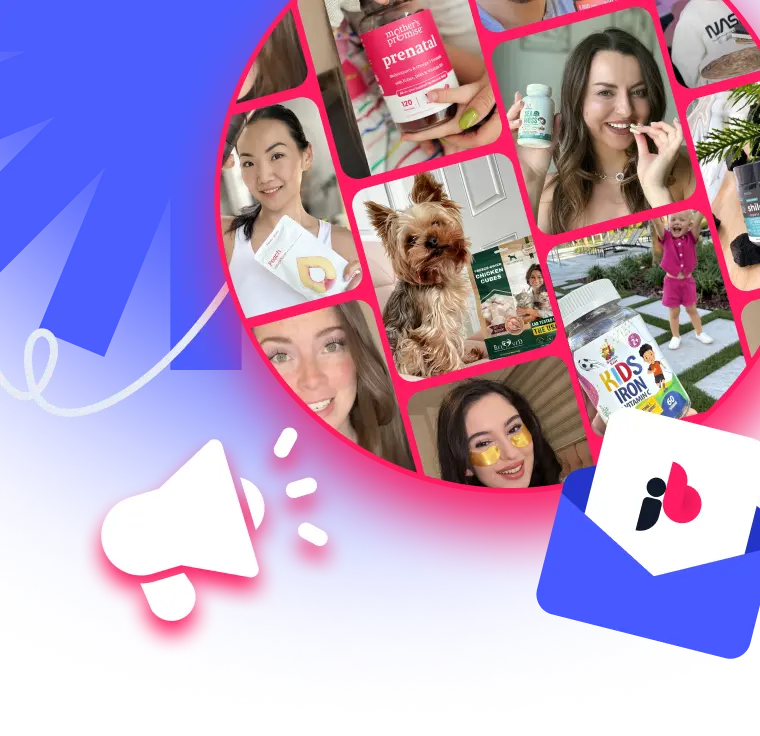 How to Recruit Affiliates Who Actually Drive Sales
How to Recruit Affiliates Who Actually Drive Sales
In a world saturated with polished advertising, consumers crave authenticity. User-generated content (UGC) has emerged as one of the most trusted forms of marketing, offering a genuine window into real customer experiences. It’s not just about asking customers to post about you; it’s about building a community that willingly shares its passion for your brand. This crucial shift transforms passive audiences into active advocates, creating a powerful engine for trust, engagement, and sustainable growth.
However, inspiring high-quality UGC that truly resonates requires a deliberate and strategic approach. It goes beyond simple hashtag campaigns and taps into the core motivations of your audience. While authentic voices are a cornerstone, exploring other engaging social media content ideas can further broaden your brand’s digital reach and complement your UGC strategy.
In this comprehensive guide, we move past the surface-level and dissect 8 powerful UGC content examples. We’ll break down the exact strategies that made them successful, from viral challenges to heartfelt testimonials. You’ll learn not just what these brands did, but why it worked and how you can replicate their success to build an unstoppable wave of authentic content for your own brand.
Table of Contents
1. Customer Review Videos
Customer review videos are one of the most powerful and authentic forms of user-generated content (UGC). These are unscripted, genuine video testimonials created by actual customers showcasing their experience with a product or service. Unlike polished advertisements, these videos provide raw social proof, building trust and helping potential buyers make informed decisions by seeing real people share real results. They are a cornerstone of modern marketing, especially for e-commerce and direct-to-consumer brands.

This type of UGC is highly effective because it directly addresses a key consumer question: “Will this work for someone like me?” Brands like Glossier master this by featuring customer testimonials directly in their Instagram feeds, while Amazon integrates video reviews on product pages, allowing shoppers to see products in use before buying.
Why It Works & How to Replicate It
The power of customer review videos lies in their authenticity. A study by Wyzowl found that 96% of people have watched an explainer video to learn more about a product or service. When that video comes from a peer, its credibility skyrockets. For a deeper dive into the significance of authentic customer feedback, you can explore resources on understanding why customer reviews matter.
Here are actionable strategies to generate and leverage these UGC content examples:
- Systematize the Ask: Don’t just hope for reviews. Implement an automated post-purchase email or SMS sequence that specifically requests a video review.
- Incentivize, Don’t Bribe: Offer a tangible reward like a discount on a future purchase, loyalty points, or entry into a giveaway. This encourages participation without compromising authenticity.
- Provide Clear, Simple Guidelines: Create a brief guide on what to include. Suggestion prompts like “Show us how you unbox it,” “Share your favorite feature,” or “Explain the problem it solved for you” can steer creators toward high-value content.
- Feature and Amplify: Showcase the best video reviews prominently. Embed them on product pages, share them on social media, and incorporate them into your email marketing campaigns to maximize their impact and show customers their contributions are valued.
2. Social Media Contests and Challenges
Social media contests and challenges are interactive campaigns where brands prompt users to create and share content based on a specific theme, task, or hashtag. This strategy taps into the competitive and creative spirit of social media users, transforming passive followers into active participants. By gamifying content creation, brands can generate a massive volume of brand-related UGC, boost engagement, and rapidly expand their reach through user networks.
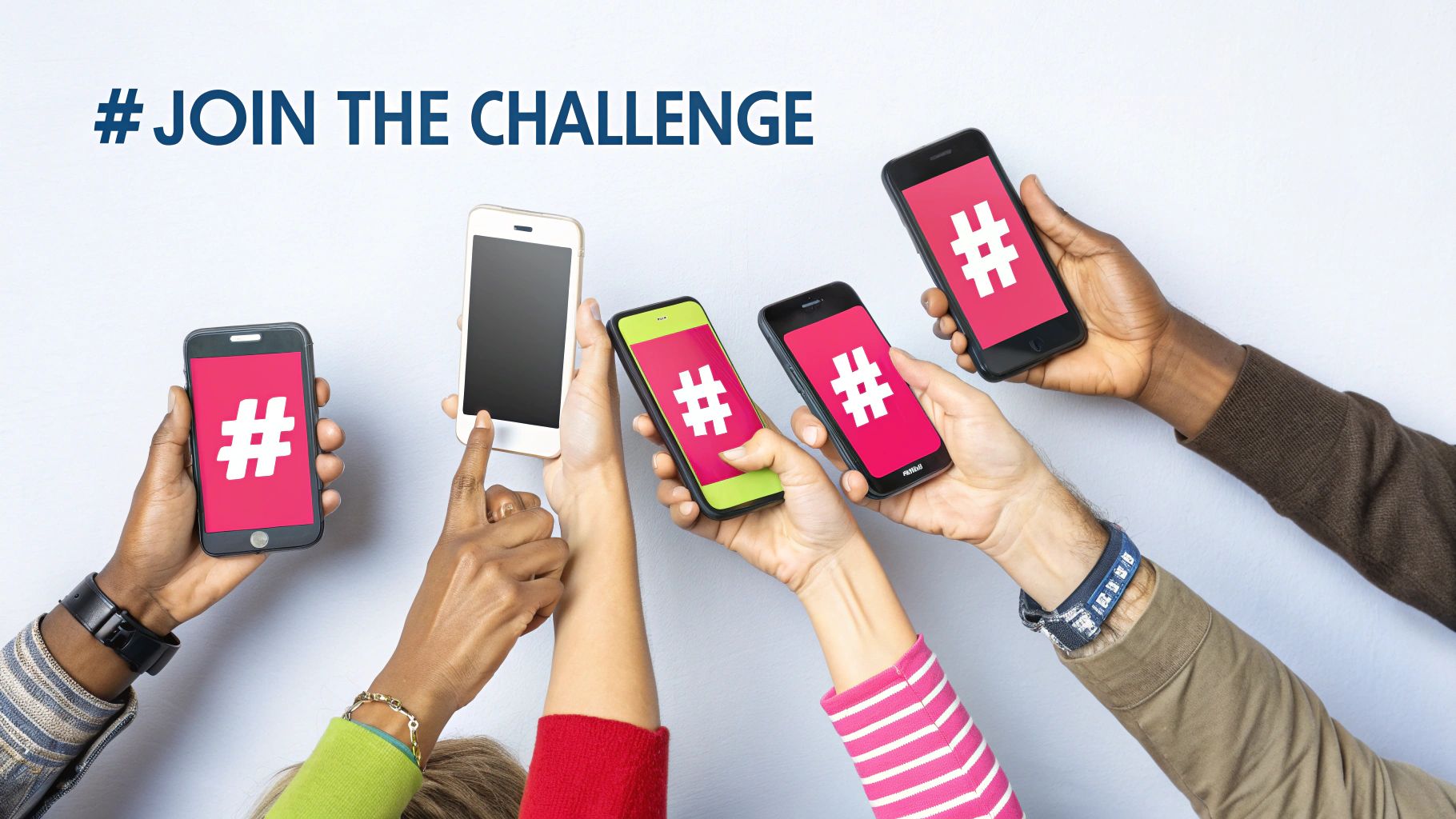
This is one of the most effective UGC content examples for creating viral momentum and building a strong sense of community. Iconic campaigns like Starbucks’ annual #RedCupContest encourage customers to share creative photos of their holiday-themed cups for a chance to win. Similarly, GoPro’s ongoing challenges inspire adventurers to submit their best action shots, consistently populating GoPro’s feed with stunning, authentic content that perfectly aligns with its brand identity.
Why It Works & How to Replicate It
The success of social media challenges is rooted in a simple psychological principle: people love to play, compete, and share their creativity. These campaigns provide a structured outlet for self-expression while offering the potential for rewards and public recognition. The branded hashtag serves as a digital filing cabinet, collecting all entries into an easily discoverable stream of social proof and brand advocacy.
Here are actionable strategies to generate and leverage these UGC content examples:
- Create Clear, Simple Rules: The easier it is to participate, the more entries you will receive. Define the goal, the prize, and the submission process (e.g., “Post a photo with X product using #YourHashtag”) in a clear, concise way.
- Use a Unique Branded Hashtag: A memorable and unique hashtag is essential for tracking submissions and measuring the campaign’s reach. Ensure it is easy to spell and not already in wide use.
- Partner with Influencers for Launch: Kickstart your challenge by collaborating with influencers in your niche. Their initial participation provides social proof and gives the campaign an immediate burst of visibility and momentum.
- Showcase Winning Entries: Regularly feature top submissions and announce winners publicly. This not only rewards participants but also encourages others to join in by showing them what kind of content you are looking for and that people can actually win.
3. Customer Photo Submissions
Customer photo submissions are authentic, user-generated images that show customers using, wearing, or experiencing a product in real-life contexts. These visuals act as powerful social proof, moving beyond sterile product-on-white-background shots to help potential buyers visualize themselves with the product. By showcasing products in diverse, everyday scenarios, these photos create a relatable and aspirational shopping experience that builds community and trust.
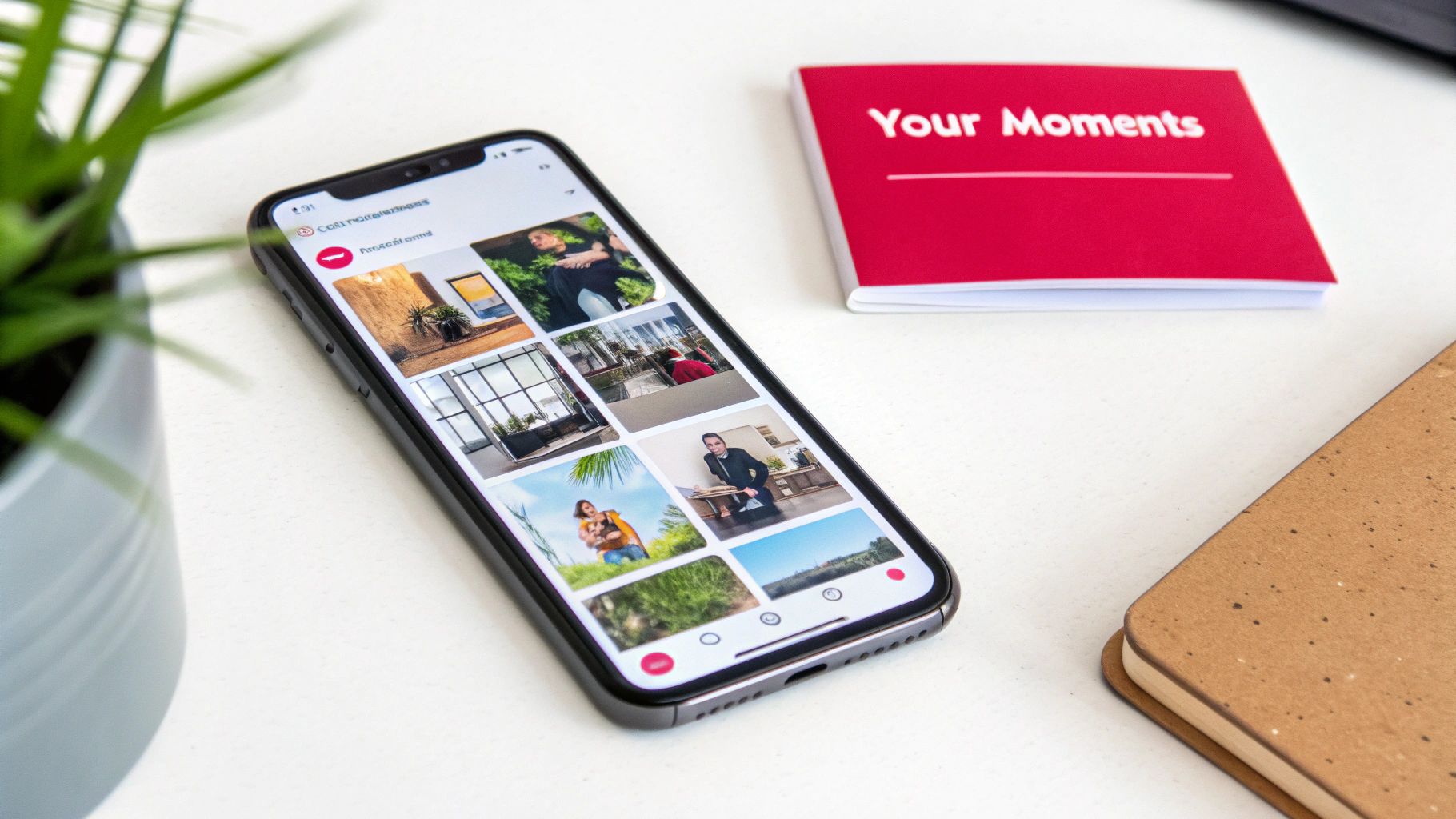
This UGC format is a cornerstone for lifestyle, fashion, and travel brands. Fashion retailer ASOS pioneered this by encouraging customers to share their outfits with the #AsSeenOnMe hashtag, featuring the photos directly on product pages. Similarly, brands like Lululemon and Patagonia build vibrant community galleries by showcasing customers using their gear on yoga mats and mountain peaks, effectively turning their user base into a relatable, global marketing team.
Why It Works & How to Replicate It
The effectiveness of customer photos stems from their ability to provide authentic context and representation. A Stackla report revealed that 79% of people say UGC highly impacts their purchasing decisions. These photos answer the consumer’s question, “How would this look or work in my life?” by providing a visual, peer-endorsed answer. For a closer look at the data behind visual UGC, you can review consumer trust statistics on why user-generated content is so effective.
Here are actionable strategies to generate these powerful UGC content examples:
- Create Branded Hashtag Campaigns: Develop a simple, memorable hashtag (e.g., #MyBrandStyle) and promote it across all channels: social bios, email footers, and product packaging. This centralizes submissions.
- Integrate Galleries on Your Site: Use a UGC platform to pull in tagged photos and display them in galleries on your homepage or, more effectively, on individual product pages to connect a specific look to a purchasable item.
- Run Photo Contests: Drive a surge of high-quality submissions by running a contest with a clear theme (e.g., “Show us your summer adventures”). Offer compelling prizes to incentivize participation and creativity.
- Always Ask for Permission and Give Credit: Before reposting a customer’s photo, always ask for their explicit permission. When you feature their content, tag their handle to give them credit, which fosters goodwill and encourages more submissions.
4. Brand Hashtag Campaigns
Brand hashtag campaigns are a strategic method for curating a massive, centralized library of user-generated content. By creating and promoting a unique, brand-specific hashtag, companies encourage customers to tag their photos, videos, and stories, effectively turning their audience into a distributed content creation team. This not only fuels marketing efforts with authentic visuals but also builds a vibrant community and amplifies brand visibility across social media platforms.
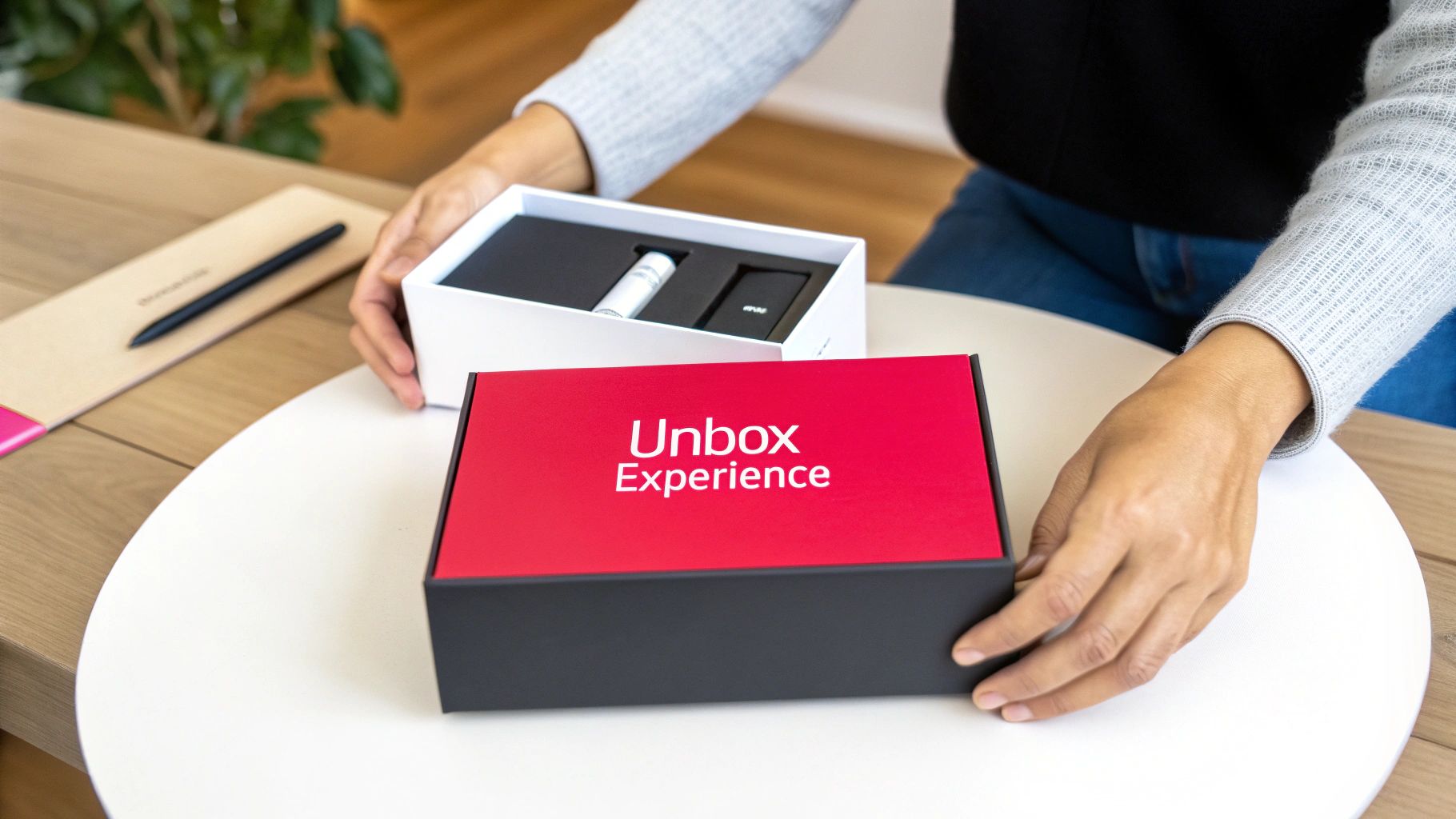
This type of UGC is incredibly powerful for building a cohesive brand narrative driven by the community itself. Iconic examples include Apple’s #ShotOniPhone, which transformed its user base into a global network of photographers, and Coca-Cola’s #ShareACoke, which personalized the product experience and inspired millions of shared moments. These campaigns create a searchable gallery of genuine customer experiences, providing endless social proof.
Why It Works & How to Replicate It
The success of brand hashtag campaigns lies in their simplicity and participatory nature. They give customers a clear and easy way to join a brand conversation, making them feel seen and part of a larger movement. This tactic creates an invaluable, evergreen stream of diverse UGC content examples that can be repurposed across all marketing channels. For more on creating community-driven initiatives, consider exploring resources on building brand communities.
Here are actionable strategies to generate and leverage these UGC content examples:
- Create a Memorable Hashtag: Keep it short, unique, and easy to spell. It should be directly related to your brand name, slogan, or a specific campaign theme, like Adidas’ use of #ImpossibleIsNothing.
- Promote It Everywhere: Don’t let your hashtag be a secret. Include it in your social media bios, on your website, in email signatures, on product packaging, and in-store signage to maximize visibility.
- Engage and Interact: Actively monitor your hashtag feed. Like, comment on, and share user posts to show appreciation and encourage more people to participate. This engagement is crucial for momentum.
- Feature User Content: Regularly showcase the best submissions on your own social media feeds, website, and ad creatives. Always ask for permission and credit the original creator to build trust and goodwill.
5. Product Unboxing Videos
Product unboxing videos are a dominant force in the world of UGC, capturing the thrill of a customer’s first interaction with a product. These videos document the entire experience, from opening the packaging to revealing the item inside and sharing genuine first impressions. They tap into the powerful psychological appeal of anticipation and vicarious discovery, offering potential buyers an unfiltered look at what they can expect. This raw, step-by-step reveal serves as both an authentic product demonstration and a powerful form of social proof.
This format has become a cultural phenomenon, particularly for brands with a strong focus on presentation and experience. Tech giants like Apple and streetwear labels like Supreme have built entire launch cycles around the unboxing moment. Similarly, subscription services like Birchbox rely on the monthly unboxing ritual shared by their community, turning a simple delivery into a shareable event. These UGC content examples transform the post-purchase phase into a key marketing asset.
Why It Works & How to Replicate It
The magic of unboxing videos is that they sell an experience, not just a product. The anticipation and satisfaction are contagious, creating a sense of desire and excitement in the viewer. The unscripted nature of these videos provides an honest assessment of everything from package quality to the product’s look and feel, which is far more convincing than a polished ad. This firsthand perspective helps bridge the gap between online browsing and tangible ownership.
Here are actionable strategies to generate and leverage these UGC content examples:
- Invest in Premium Packaging: Your packaging is the stage for the unboxing. Make it memorable, branded, and aesthetically pleasing. A well-designed box or wrapper is more likely to be filmed and shared.
- Include Surprise Elements: Add a small, unexpected gift, a personalized note, or unique tissue paper. These thoughtful details elevate the experience from a simple transaction to a special event, prompting creators to highlight them.
- Encourage Sharing with Hashtags: Create a clear, unique, and memorable branded hashtag (e.g., #BrandUnboxed) and feature it prominently on your packaging and order confirmation emails. This makes it easy to track and reshare content.
- Create Shareable “Moments”: Design the unboxing journey with specific reveal points. Consider using pull-tabs, nested boxes, or a unique way of unwrapping the product that is inherently satisfying and visually appealing on camera.
6. Customer Success Stories
Customer success stories are in-depth narratives that go beyond a simple review. They are detailed accounts from customers explaining how a product or service helped them overcome a specific challenge or achieve a significant goal. These stories function as powerful case studies, providing tangible proof of a product’s value and creating a deep emotional connection with potential customers by showcasing relatable journeys and transformative outcomes.
This form of UGC is exceptionally powerful for high-consideration purchases or services where demonstrating long-term value is critical. Brands like Peloton excel at this, featuring member stories of fitness transformations and personal milestones. Similarly, Shopify regularly highlights merchant success stories, showing how its platform enabled entrepreneurs to build thriving businesses from the ground up. These narratives provide both inspiration and concrete evidence of a product’s impact.
Why It Works & How to Replicate It
The effectiveness of customer success stories lies in their narrative structure and focus on transformation. They tap into the classic “hero’s journey” archetype, where the customer is the hero and the product is the tool that helps them triumph. This storytelling approach is far more memorable and persuasive than a list of features. For more on building these narratives, you can explore resources on crafting compelling case studies.
Here are actionable strategies to generate these powerful ugc content examples:
- Identify Potential Heroes: Monitor your community for customers who are highly engaged, have shared positive feedback, or have been using your product for a long time. Reach out to them personally to see if they’d be willing to share their journey.
- Focus on Measurable Outcomes: Guide the story by asking for specific, quantifiable results. Instead of “it helped my business grow,” ask for metrics like “by what percentage did your revenue increase?” or “how much time did you save per week?”
- Structure the “Before and After”: Prompt customers to describe their situation before using your product and contrast it with their results after. This classic storytelling technique clearly demonstrates the value you provided.
- Create High-Impact Formats: While written stories are great, repurpose the best ones into video testimonials or polished case study PDFs. Feature these stories prominently on a dedicated section of your website, in sales materials, and across your marketing channels to build credibility and drive conversions.
7. Fan Art and Creative Content
Fan art and creative content are powerful forms of UGC where customers and fans produce artistic interpretations of a brand, its products, or its intellectual property. This includes everything from illustrations and digital paintings to custom designs and crafts. It represents one of the deepest levels of brand loyalty, transforming passive consumers into active co-creators who invest their time and talent into celebrating the brand’s identity. This content is exceptionally valuable as it creates unique, highly shareable assets that enrich the brand’s culture.
This type of UGC is a testament to a brand’s cultural impact. Entertainment giants like Disney and Marvel thrive on fan creations, while consumer brands like Starbucks see their iconic cups turned into canvases. These artistic expressions are not just content; they are proof of a vibrant, engaged community built around the brand’s universe. Featuring this content demonstrates that a brand values its community’s creativity and passion.
Why It Works & How to Replicate It
The effectiveness of fan art lies in its ability to foster a deep emotional connection and a sense of belonging. When a brand acknowledges and shares fan art, it validates the creator’s passion and strengthens the entire community. This type of authentic, user-driven content often resonates more strongly than traditional marketing because it is born from genuine affection. For more insights on building this type of community, you can explore resources on how brands can leverage creative communities.
Here are actionable strategies to generate these kinds of UGC content examples:
- Host Creative Contests: Launch themed art or design challenges with specific prompts related to a new product launch, a season, or a brand milestone. This provides direction and a clear call-to-action for artists.
- Establish Clear Submission and Usage Guidelines: Create a dedicated portal or hashtag for submissions. Be transparent about how the art will be used and ensure you have clear terms for crediting the artist and obtaining usage rights.
- Feature and Credit Prominently: Regularly showcase the best fan art on official social media channels, in blog posts, or even on a dedicated gallery on your website. Always tag and credit the original creator to show appreciation and encourage more submissions.
- Engage with the Creative Community: Don’t just post the art; engage with the artists. Comment on their work, share their portfolios, and build genuine relationships. This fosters goodwill and loyalty within the creative community.
8. Live Social media takeovers
Live social media takeovers involve temporarily handing over control of a brand’s social media account to an influencer, employee, or even a loyal customer. This strategy provides an authentic, behind-the-scenes look at a brand from a fresh perspective. The real-time, unscripted nature of takeovers fosters a strong sense of community and direct engagement, as the audience gets to interact with a real person rather than a faceless corporate entity. It’s a powerful way to generate exciting and unpredictable UGC content examples.
This tactic has been famously used by brands like National Geographic, which allows its photographers to take over its Instagram account to share stunning visuals and stories from their expeditions. Similarly, Adidas often gives athletes control of its channels to share a day in their training life, connecting fans directly with their heroes and reinforcing the brand’s performance identity.
Why It Works & How to Replicate It
The effectiveness of a social media takeover stems from borrowed credibility and novelty. When an audience sees a trusted or interesting figure at the helm, they are more likely to tune in and engage. This approach breaks the monotony of standard brand messaging and introduces an element of surprise. According to Sprout Social, content from employees receives 8x more engagement than content shared through brand channels, and takeovers tap directly into this power.
Here are actionable strategies to generate and leverage these UGC content examples:
- Vet Participants Thoroughly: Choose individuals who align with your brand values and have a genuine connection to your product or mission. This could be an industry expert, a passionate employee, or a micro-influencer with a highly engaged following.
- Establish Clear Guidelines: While authenticity is key, you need to set clear boundaries. Provide the host with a content plan, key messaging points, and a list of do’s and don’ts to protect your brand reputation.
- Promote the Takeover in Advance: Build anticipation by announcing the takeover across all your channels several days beforehand. Introduce the host and let your audience know what to expect and why they should tune in.
- Monitor in Real-Time and Engage: Have a team member monitor the takeover as it happens to answer questions in the comments, manage any inappropriate content, and support the host. Create a branded hashtag for the event to track conversations.
UGC Content Types Comparison Table
| Content Type | Implementation Complexity 🔄 | Resource Requirements ⚡ | Expected Outcomes 📊 | Ideal Use Cases 💡 | Key Advantages ⭐ |
|---|---|---|---|---|---|
| Customer Review Videos | Medium – requires video collection and moderation | Moderate – video editing and management | High trust and credibility boost; increased conversions | Authentic social proof, product feedback, buyer decisions | Builds trust; higher conversion rates; cost-effective |
| Social Media Contests and Challenges | High – campaign design, moderation, influencer coordination | Moderate to High – prizes, monitoring, influencer partnerships | Massive reach and engagement; viral content generation | Brand awareness campaigns, community engagement | Large reach; cost-effective content creation; community building |
| Customer Photo Submissions | Low to Medium – photo collection and community management | Low – mostly user-generated content submission | Increases purchase confidence; authentic brand image | Visual user content, social proof, loyalty building | High visual appeal; reduces returns; free marketing content |
| Brand Hashtag Campaigns | Low – hashtag creation and promotion | Low – mainly promotional efforts | Increased brand visibility and community engagement | Brand awareness, scalable UGC collection | Easy tracking; cost-effective; builds loyalty |
| Product Unboxing Videos | Medium – requires quality packaging and video encouragement | Moderate – packaging design, influencer partnerships | Builds anticipation; honest product feedback | Product launches, packaging showcase, influencer marketing | Emotional connection; highly shareable; honest demos |
| Customer Success Stories | High – collecting detailed narratives and permissions | High – interview, editing, story crafting | Persuasive emotional connections; proof of value | Case studies, aspirational marketing | Strong emotional impact; concrete proof; aspirational content |
| Fan Art and Creative Content | Medium – community nurturing and content curation | Low to Moderate – contest prizes, community engagement | Unique brand assets; viral potential | Brand culture building, creative community engagement | Demonstrates loyalty; unique content; cost-free |
| Live Social Media Takeovers | High – vetting, coordinating, real-time monitoring | Moderate to High – planning, vetting, promotion | Fresh, authentic content; increased audience interaction | Real-time engagement, behind-the-scenes access | Authenticity; interactive engagement; fresh perspectives |
From Inspiration to Implementation: Your Next Steps in UGC
Throughout this exploration of diverse UGC content examples, a powerful, unifying theme has emerged. The most successful brands don’t just sell products; they cultivate communities and empower their customers to become active storytellers. We’ve seen how this plays out across different formats, from the raw, persuasive power of customer review videos to the engaging, viral energy of a TikTok challenge.
The strategic genius behind campaigns like Aerie’s #AerieREAL or GoPro’s Awards isn’t just about collecting content. It’s about building a framework of trust, encouragement, and reward. These brands provide the stage, the prompt, and the spotlight, and their customers eagerly step up to create authentic narratives that resonate far more deeply than any polished corporate advertisement could.
Key Takeaways: The Core Principles of Great UGC
Reflecting on the examples, several core principles are consistently present:
- Authenticity is Non-Negotiable: The unboxing videos, the unfiltered photo submissions, and the honest testimonials all succeed because they feel real. Your primary goal is to protect and encourage this authenticity, not to script it.
- Clarity is Kindness: Successful campaigns have clear instructions, simple-to-use hashtags, and an obvious call to action. Whether it’s a social media contest or a request for photo submissions, make participation as frictionless as possible.
- Value Exchange is Essential: The “what’s in it for me” is crucial for the user. This doesn’t always have to be a monetary prize. It can be social recognition, a feature on your brand’s page, or simply the fun of participating in a creative community.
- Strategic Repurposing is Key: The best brands don’t let great UGC sit on one platform. They repurpose customer photos into website banners, embed video testimonials on product pages, and turn hashtag campaign highlights into powerful ad creatives.
Your Action Plan for Launching a UGC Initiative
Moving from inspiration to action is the most critical step. Don’t feel you need to launch a massive, multi-platform campaign overnight. The most effective approach is often incremental. Start small, learn from the results, and scale what works.
Here is a simple, actionable roadmap to get started:
- Define a Specific Goal: What do you want to achieve? Is it more social proof for a specific product? Is it building a library of authentic lifestyle images? A clear objective will guide your entire strategy.
- Choose Your Format: Based on your goal and your audience’s platform preferences, select one UGC type to focus on first. If you sell a visually appealing product, a customer photo submission campaign (#YourBrandStyle) is a great starting point.
- Craft a Clear & Compelling Brief: Develop a simple set of guidelines. What should users post? What hashtag should they use? What are the “dos and don’ts”? Make it easy for them to succeed.
- Launch and Promote: Announce your initiative across your key channels, like email and social media. Lead by example by seeding the campaign with a few initial posts to show customers what you’re looking for.
- Engage, Acknowledge, and Reward: This is the most important part. Actively monitor submissions, like and comment on every relevant post, and publicly celebrate your favorite creators. This engagement fuels the fire and encourages more participation.
Mastering the art of generating and leveraging these UGC content examples is no longer a “nice-to-have” in digital marketing; it is a fundamental pillar of modern brand building. By turning your customers into your creative partners, you build a powerful, self-sustaining engine of trust, loyalty, and growth that will set your brand apart.
Ready to scale your UGC strategy without the logistical headache? JoinBrands connects you with a vast network of vetted creators ready to produce authentic, high-quality content on demand. Streamline your entire process, from creator discovery and briefing to content approval and payment, all on one simple platform. Start building your library of powerful UGC with JoinBrands today.

